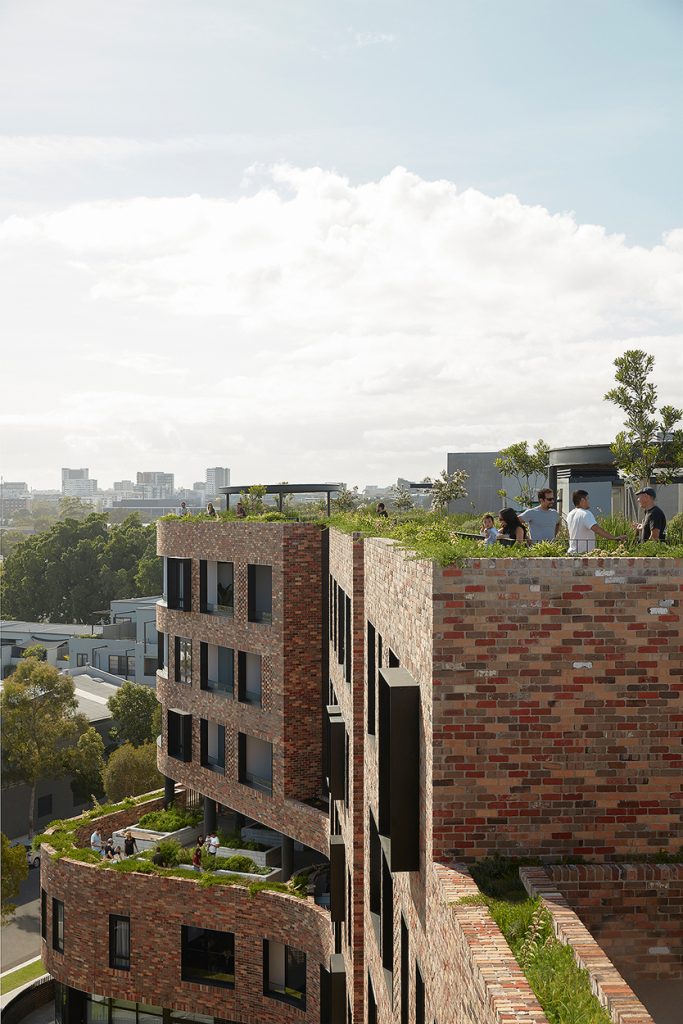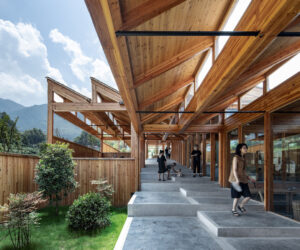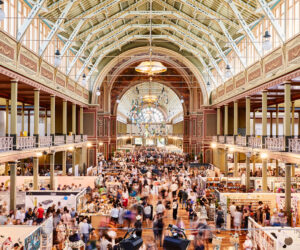Inside Australia’s largest recycled brick building, Arkadia
Louis Kahn famously held conversations with materials. He encouraged design students to ask, ‘Tell me brick, what do you want to be, brick?’ Kahn wanted his students to see the limitations – and especially the potential – of materials, and to use them appropriately. The Arkadia development, at its core, did the same. Extensive research into the site’s history, the community and the environment were undertaken to inform the resulting design that sets a new benchmark for sustainable multi-residential development in Australia.
Heralded as the largest recycled brick building in Australia, the Arkadia development for Defence Housing Australia occupies a 5590-square-metre site in the growing inner-city suburb of Alexandria, NSW. The development has been carefully integrated into the surrounding streets in a way that enhances the neighbourhood while offering a compelling model for urban living.
Acknowledging the historic narrative and heritage of this site was the starting point for the design team that comprised DKO Architecture, Breathe Architecture and landscape architects, Oculus.
“We were inspired by the poetic gesture of recalling traces of history and that informed the façade proposition,” says DKO Principal, Koos de Keijzer.
The monumental and curvilinear forms of Arkadia were inspired by the notion of community at ground level. Focusing on communal sun-soaked spaces to the north, Arkadia encourages a connection to the local community through extensive gathering spaces and small-scale entrances. Landscaped throughlinks and an integrated public pocket park seeks to give something back to the wider community. These spaces encourage chance meetings across the site while maintaining key pedestrian links to Sydney Park and beyond.
Cleverly composed so that each of the buildings house micro communities with only seven-eight apartments on each level and with each building serviced by its own core lift shaft.
“We firmly believe that smaller communities are better communities, when you have more than 12 neighbours you start to lose that personal feel. It is exactly the same as getting to know your neighbours [who] live on the same street,” observes de Keijzer.
Each lift core has as a communal vegetable garden and a separate roof top recreational area complete with barbeque facilities, which aggregates a tight knit community and encourages social interaction. Community gardens are important to Arkadia – bees and chickens were some of the first residents to move in.
A checklist of sustainability features ensures that Arkadia minimises its environmental footprint. From an architecturally designed chook run, plentiful bike sheds and drought-tolerant planting to world-class weather sensitive design and air reticulation. Notably, the dominant material of recycled bricks not only references the site’s history as an 1870s brickworks, but provides a thermally efficient envelope while championing the use of recycled materials in large construction projects.
“It was challenging to find the bricks themselves as we were quite insistent on the colour blend of the bricks used. They needed to be a consistent batch,” says de Keijzer. “Oranges, yellows and reds in the brick colours gives the building its ageless appearance which is achieved by using recycled bricks. The beauty of this is that the organic change of colour occurs as you walk around the building.”
The design team has incorporated a diverse range of apartment typologies – with a mix of studio through to three-bedroom apartments and terraces plus adaptable plans that guide the creation of a truly mixed community.
Arkadia heralds a new wave of large-scale residential developments that bring together the best of community, sustainability and good design.






